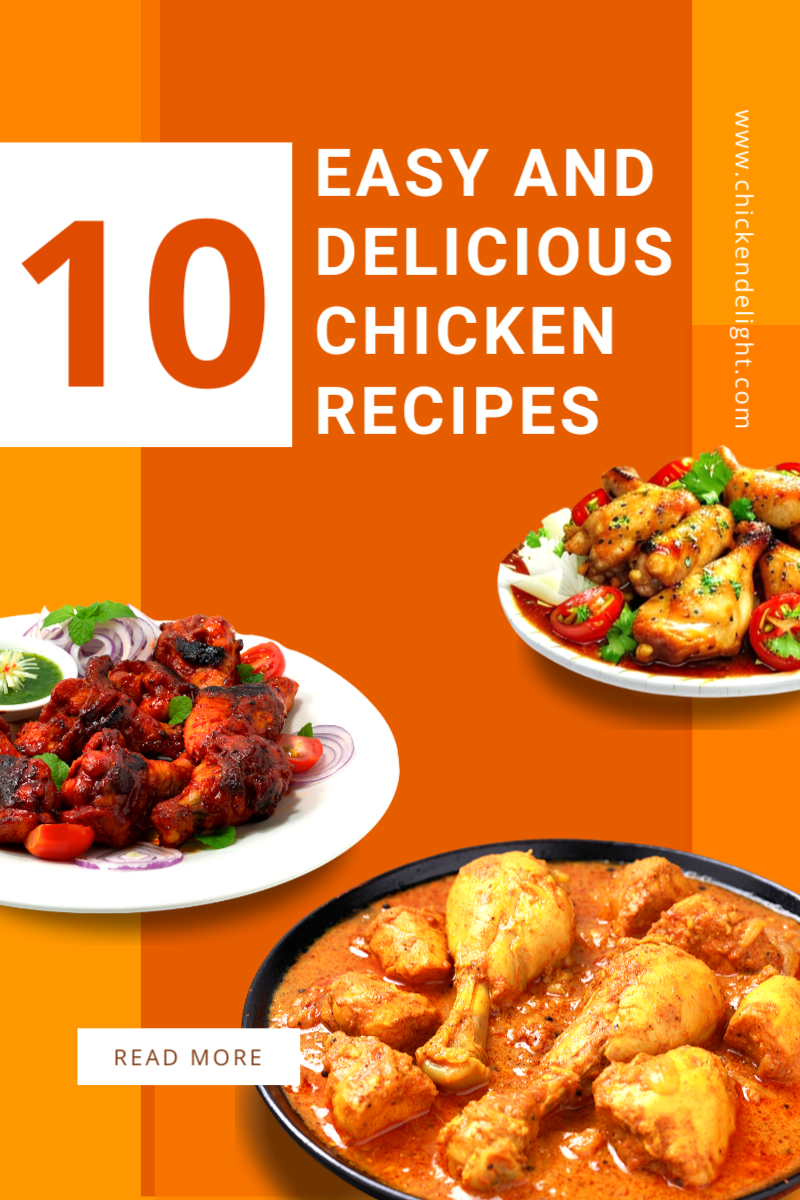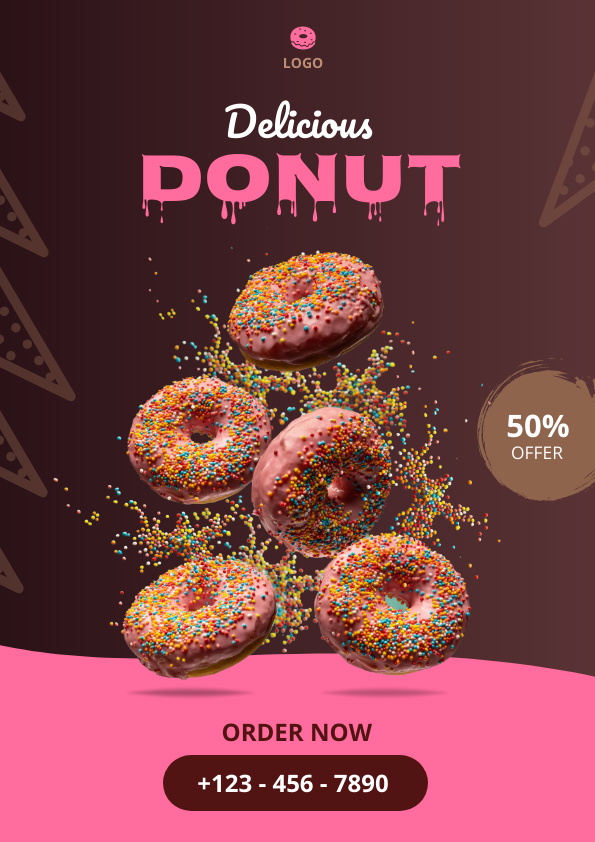
Top 15 Marketing Channels to Grow Your Brand

If we lived in the 1980s, we would have used only display ads for television and print as marketing channels. Marketing strategies have changed from in-the-face ads to retaining trust in the brand through its social media presence. Luckily, diverse marketing channels exist to showcase your products in a hundred ways in today’s growing world. However, not all marketing channels are created equal, and it’s crucial to identify and leverage the most effective ones for your business.
Top 15 Marketing Channels
- Social Media Marketing: Helps to build awareness, increase sales, and drive traffic.
- Influencer Marketing: Affordable channel for new businesses to increase reach.
- Podcast Marketing: Helps promote a product and increase engagement.
- Blogs: Suitable for targeting potential customers directly through information.
- SEO: Ideal for improving organic search traffic to the website.
- Email Marketing: Helps engage customers with targeted emails.
- Video Marketing: Ideal for showcasing products and services with visuals.
- Omnichannel Marketing: Increases customer engagement through multiple channels.
- Word-of-Mouth Marketing: Encourages more people to talk about your brand.
- Affiliate Marketing: Encourages people to refer a product in return for a commission on the sale.
- Traditional Marketing: Includes TV ads, print media, and billboards for promotion.
- Event Marketing: Best way to engage potential customers with the products directly.
- Content Marketing: Helps to raise brand awareness, drive sales, and build trust.
- Pay-per-Click Ads: Cost-effective channel to directly target interested customers.
- SMS Marketing: Simple marketing channel with a clear call-to-action.
To ensure you understand all the marketing channels, we will walk you through fifteen channels with examples, templates, and insights to help you find the best ones for your business. Whether you’re a seasoned marketer or just starting, this blog will equip you with crucial tips for choosing the best marketing channels and staying ahead of the curve.
Table of Contents
What are Marketing Channels
Marketing channels are various platforms and methods through which marketing professionals promote products, services, or brands. These channels can be people, organizations, and activities that transfer goods and services from the point of production to the point of consumption. In other words, a marketing channel is anything that effectively helps build awareness, generate leads, and drive sales for your brand.
Benefits of Marketing Channels
Before you invest in any marketing channel, the central question is: “Are marketing channels important?” Of course, they are. One of the obvious answers is that they help to inform potential customers about your brand. Nonetheless, there are more benefits of opting for marketing channels.
To increase brand awareness, you must identify the best route to reach the right audience. Marketing channels help attract an audience interested in your product or services. By leveraging these channels, you can ensure that your marketing efforts are directed toward those most likely to become loyal customers, thereby maximizing your brand’s visibility and impact.
Allocating funds to marketing collaterals is crucial for any business. The marketing strategy involves a goal that marketing channels help to achieve. Ultimately, companies want to save time and money, and the channels support them. With the right marketing channel, you can hit the bull’s eye by tapping into a market where you can make greater ROIs.
15 Types of Marketing Channels
As a marketer, you can use many marketing channels to promote your brand, from social media platforms to search engines, email marketing, and influencer partnerships. Here are some examples of these marketing channels to maximize your brand growth.
1. Social Media Marketing
Social media marketing is one of the most effective marketing strategies, leveraging the power of platforms like Facebook, Instagram, X/Twitter, TikTok, etc. It’s no wonder that it has immense potential, as around 62.6% of the world’s population uses social media. Being out there on social media automatically increases your chances of being seen.
Plus, your social presence helps you connect with your audience. Your potential customers can extract a lot of information from your social persona, such as your products, services, location, offers, brand voice, goals, etc. For instance, look at this tempting Instagram post from Starbucks showcasing its product with rich visuals.
Post high-quality images with attention-grabbing themes to increase visibility when uploading your visuals on social media. Stay updated with the latest social media trends and different types of graphics to drive traffic. Also, think of engaging ways to inform your audience about your offer.
Creating social media posts can be daunting, but DocHipo makes it easy. Try DocHipo’s Instagram Post Templates to make your social media presence stand out. Here is one of the stunning designs.

Get This Template and More
Also, check out one of the designs from Facebook Post Templates to enhance your social presence.

Get This Template and More
Are you tired of designing posts for different social media platforms? Use Square Post Templates to create an all-in-one design and optimize it for any platform with a single click using the page resize option.
Watch this video to learn more about the Square post and Facebook ads in DocHipo.
Further Reading
2. Influencer Marketing
A solid social media presence is the definition of an influencer. According to the Hubspot Survey, 23% of marketers have already used influencer marketing, and 87% plan to increase their investment in this marketing channel.
Brands often collaborate with influencers to promote their products as influencer marketing banks on the trust and popularity of influencers. It is one of the quickest ways to increase brand awareness, as you can collaborate with influencers in your niche.
3. Podcast Marketing
Lately, podcasts have experienced a booming growth in their audience. Audio content has remarkable potential for hooking its audience with engaging content. From the stats below, you can infer that the number of podcast listeners exponentially increases yearly.
Now, you can host your podcast by choosing topics that will attract your audience. You can also invite people in your industry to share insights that will help you subtly promote your brand. Before conducting an interview session, conduct in-depth research about your target audience, industry, and guests.
Nonetheless, creating podcasts will require high-quality equipment and advanced editing skills. To get started, two of the most streamed podcast platforms are Spotify and Apple Podcasts.
Another way of introducing your business is through podcast advertisements. If you want to save yourself from the effort of setting up your podcast channel, you can place pre-roll, post-roll, and mid-roll ads within a podcast.
4. Blogs
Some people like to watch, others want to listen, but many like to read to extract information. When you google something, the search results bring you a variety of blog posts that inform you about everything. You can have your blog on the website to promote your products and services.
Here is a glimpse of the DocHipo blog page that helps to engage the audience through information related to graphic design.
Even though blogs are reader-centric, one should avoid creating a text-heavy blog post. A blog should have eye-catching visuals and illustrations to grab attention. In fact, including visuals and videos in your blog posts enhances the chance of success.
Try DocHipo’s Blog Graphic Templates for high-quality and impeccable visuals for every industry, such as beauty, business, food, or travel.

Get This Template and More
Also, check out various creative Blog Banner Templates to revamp your blog posts.

Get This Template and More

Get This Template and More
5. SEO
Do you know that SEO drives 1000%+ times more traffic than organic search? That’s enough reason to leverage the power of search engine optimization. To put it differently, SEO is the process that helps improve a website’s or content’s ranking.
SEO may include diverse processes, such as backlinks, keyword research, optimizing webpages, etc., that help you rank above your competitors in Google results. However, SEO strategies evolve when search engines change their choice of results. Ultimately, remember that authenticity and trustworthiness are integral parts of search results.
6. Content Marketing
Content is the king in this digital era, and it comes in many different forms, such as video, audio, text, PDF, and visual. The ultimate goal of any content is to engage the audience, build trust, and convert leads into sales.
Your content’s creativity and originality will help you stand out from your competitors. Further, this marketing channel requires an organized strategy based on what your audience wants to engage with. For example, Spotify’s Wrapped Playlists became one of the most popular content marketing strategies, as it tailored playlists according to the most played songs by users.
Moreover, check out one of the Infographic Templates from DocHipo to learn crucial tips about content marketing.

Get This Template and More
Your website, blog, and videos should align to provide valuable content for your audience. However, you may need help standing out with your content and some out-of-the-box ideas.
7. Email Marketing
Brands have long used emails to maintain connections with subscribers. Around 4.26 billion people use emails daily, offering immense opportunities to drive engagement and increase sales.
However, email advertisements can go unnoticed if you flood your subscriber’s inbox. Thus, it is crucial to engage subscribers with educational or offer-oriented emails. Email marketing is also a great way to give exclusive offers and discount vouchers, like this one from Etsy, with an eye-catching email header design.
Ignite interest among your subscribers with stunning Email Header Templates from DocHipo.

Get This Template and More

Get This Template and More
In addition, email marketing requires management and monitoring to become successful. In this era of automation, you can use tools like Mailchimp to keep track of your email marketing campaigns. Get the most out of DocHipo integrations with Mailchimp and save your designs directly in the application.
Watch this video to learn more about saving designs in Mailchimp.
Further Reading
8. Video Marketing
Videos dominate content platforms, as 92% of businesses believe they are essential to their marketing strategies. Video marketing uses social media platforms, YouTube channels, and websites to promote a business.
You can upload video ads on various platforms or create a YouTube channel to upload videos about your products and services consistently. Either way, videos are dynamic and provide room for compelling visual storytelling. For example, here is a glimpse of the YouTube page of DocHipo with plenty of tutorials, design hacks, and updates.
Explore these engaging YouTube Thumbnail Templates from DocHipo and make stand-out content for your channel.

Get This Template and More

Get This Template and More
9. Omnichannel Marketing
Your brand may need more than one marketing channel in this competitive atmosphere. Omnichannel marketing acts as a safety net by promoting your brand on multiple platforms. As shown below, using three or more channels can result in tremendous growth in purchase and engagement rates.
While using Omnichannel strategies, consistently use brand assets on every platform to build awareness. Your marketing team would require clear brand guidelines about using these assets. Further, to make on-brand designs without hassle, use DocHipo’s brand kit and save essential assets for easy access.
Watch this video to learn more about using brand kits in DocHipo.
10. Word-of-Mouth Marketing
Word-of-mouth marketing is all about creating a buzz about your brand. The most effective way to increase sales is to get people to discuss your products. Around 92% of consumers trust recommendations from friends and families to make purchase decisions.
Nonetheless, this type of marketing channel depends mainly on organic marketing. Eventually, a solid product or service will see a sales boom, leading to more considerable customer retention.
However, you can use marketing strategies on social media platforms to encourage people to talk about your product through reviews and hashtags, such as @mentions rewards. You can also use viral marketing strategies on social media toy apps to engage the audience with hot topics.
11. Affiliate Marketing
Affiliate marketing is a marketing strategy in which people promote a product or service in return for a commission on sales. It is one of the fastest-growing marketing channels, as over 81% of brands use it to drive sales. For instance, Amazon’s affiliate marketing program is one of the best examples of affiliate marketing, where users promote a product with a referral code. After the customer purchases the product, the marketer earns the commission instantly.
12. Traditional Marketing
Ads have existed for a very long time. Before the internet, brands advertised their products on television, radio, and newspapers. Although traditional advertising may seem like a bygone era, many companies still use traditional marketing channels.
Posters, billboards, flyers, brochures, and other traditional print marketing strategies are relevant today. In fact, the billboard and outdoor advertising market is expected to grow by 4.6%.
Therefore, you must consider traditional marketing channels, especially when you have a local business. Print marketing strategies require a blend of compelling design and catchy copy.
A shortcut to achieve this is to use DocHipo templates for posters, brochures, flyers, etc., to make a mark on your audience.
Also, take inspiration from these Poster templates from DocHipo to advertise your brand.

Get This Template and More

Get This Template and More
13. Event Marketing
Brands occasionally host events to create hype and increase their network. These events can be offline, like conferences, seminars, exhibitions, etc, or online, like webinars and workshops. This marketing channel helps a brand engage with its target audience directly and gain insights from their feedback.
For instance, Microsoft sponsors one of the most hyped Building the Future Hackathon events. The event caters to computer programming and aims to reward teams’ innovative approaches by funding future projects.
If you want to host a webinar on LinkedIn, inform your audience with these eye-catching Events LinkedIn Post Templates from DocHipo.

Get This Template and More

Get This Template and More
14. Pay-per-click Ads
Pay-per-click (PPC) ads are online ads in which an advertiser gets paid every time a user clicks on the ad. The most common PPC ad type is the search ad, where a user searches for products or services. To illustrate, here are some sponsored ad results for cat food.
Users should remember that even the highest bid for the search ads does not ensure their ads are visible. Thus, such ads require SEO strategies to rank in the top search results.
15. SMS Marketing
As the name suggests, SMS marketing involves sending messages to customers about offers, promotions, referrals, and updates. Here is an example of a promotional SMS notifying you about a free offer.
There are many misconceptions about this marketing channel, and people assume SMS marketing is a thing of the past. However, you can infer from the infographic data that brands use SMS marketing strategy more than before.
Further, if brands want to use SMS marketing in the USA, they must follow the laws under the Telephone Consumer Protection Act (TCPA) and the CAN-SPAM Act. The law governing SMS marketing advises obtaining consent from the customer and an easy opt-out option.
How to Choose a Marketing Channel
Choosing a channel with a marketing strategy can save you money and effort. Therefore, you need a solid plan to select the best channel for results.
Define Your Target Audience
Knowing your audience is the first step to creating an effective marketing campaign. Therefore, before you strategize your campaign, ask a few questions about your potential customers.
- What age group does your target audience belong to?
- What type of media or apps do they consume?
- What are the significant problems that you can solve?
These questions will give you a sense of direction when choosing suitable marketing channels. In addition, they will help you advertise your brand on the right platform for maximum output.
Set a Target
Next, you must set a target since you cannot use a marketing channel infinitely. Every marketing channel works differently, so you should set the goals accordingly. Depending on your business, your goal can be creating brand awareness, increasing sales, or retaining customers. For instance, your social media presence will help improve your brand image and earn consumers’ trust in the brand. Also, set the period for which you will be running your campaign.
Determine a Budget
Setting a budget is the most crucial aspect of your marketing strategy. So, set a reasonable amount for marketing and choose different channels accordingly. By shortlisting the best platforms, you can select single or multiple channels. In addition to the marketing channels, you would require a skilled marketing team, graphic design tools, and analytical tools to help you manage your marketing endeavors. Consider these avenues while allocating the budget.
Consider Suitable Channels for Your Business
Once you have done your research about your target audience, make a list of the most preferred channels. Also, research the channels that your competitors are already using. Now, shortlist the best three channels that align with your goals and can give the best results.
Nonetheless, constantly observe how your audience reacts to your marketing channels and track the ROI for the amount spent on marketing collaterals.
Test Different Marketing Channels
Now that you have gained a solid insight into the marketing channels and competitors, it’s not a done deal. Remember, discovering which channel works best for you will take a series of hits and trials. You must test and optimize your marketing strategies according to the situation’s needs.
Brands often depend on their marketing team for crucial information about their ad campaigns. You can leverage analytical tools to manage and monitor your marketing strategies on different channels. Furthermore, track your key performance indicators (KPIs), like sales, conversion rate, retention, etc, to make marketing strategies for the future.
Final Thoughts
We have sailed together through the top fifteen marketing channels with essential data, examples, and templates. Marketing channels include all the ways one can think of promoting their business to persuade consumers to purchase. Moreover, in this digital age, these channels are evolving rapidly. Therefore, keeping up with the growing market trends would help you choose the best strategy. However, the best marketing channel will generate the best revenue returns.
So, are you excited to try new marketing channels for your business? Different marketing channels require different marketing materials, such as posts, flyers, infographics, emails, etc. Create eye-catching, on-brand designs for your marketing endeavors with DocHipo. Sign up for free and start your design journey today!
FAQs
What are the channels of digital marketing?
There are several channels of digital marketing. Here are some of the essential channels:
- Social Media Marketing
- Influencer Marketing
- Podcast Marketing
- Blogs
- SEO
- Email Marketing
- Video Marketing
- Affiliate Marketing
- Content marketing
Why marketing strategy is essential?
Marketing strategies are essential to achieve various marketing objectives. These objectives include brand awareness, improving customer loyalty, increasing sales, creating sustainable goals, etc. Moreover, marketing strategies help select the proper channels for a set period, directing the business’s efforts.
What are the different types of marketing channels?
The different types of marketing channels are:
- Social Media Marketing
- Influencer Marketing
- Podcast Marketing
- Blogs
- SEO
- Video Marketing
- Omnichannel Marketing
- Word-of-Mouth Marketing
- Affiliate Marketing
- Traditional Marketing
- Event marketing
- Content marketing
- Pay-per-click ads
- SMS Marketing
What is an example of a marketing channel?
Examples include emails, posters, webinars, social media ads, and other marketing channels.
What are the six channels of digital marketing?
The six channels of digital marketing are:
- Social Media Marketing
- Influencer Marketing
- Podcast Marketing
- Blogs
- SEO
- Video Marketing
- Affiliate Marketing
- Content marketing
What is the fastest-growing marketing channel?
Social media and video marketing are the fastest-growing marketing channels due to their high engagement rate.
Which marketing channel is most effective?
A single marketing channel will not yield the best results. Instead, for most businesses, a mix of multiple channels, such as social media marketing, word of mouth, and networking, helps.
Which channel is best for B2B marketing?
Some of the best B2B marketing channels are:
- Social media
- SEO
- Emails
- Pay-per-click ads
- Podcasts
- Events
- Webinars
- Videos
What is the simplest marketing channel?
Some of the simplest marketing channels are:
- Email marketing
- Influencer marketing
- Social media marketing
- Affiliate marketing
- Video Marketing
- Traditional marketing (Display and print ads)
What is a zero channel in marketing?
In zero-channel marketing, the manufacturer directly sells the products to the end consumers without intermediaries. One of the most common examples of this type of marketing is the manufacturers with their retail stores.


